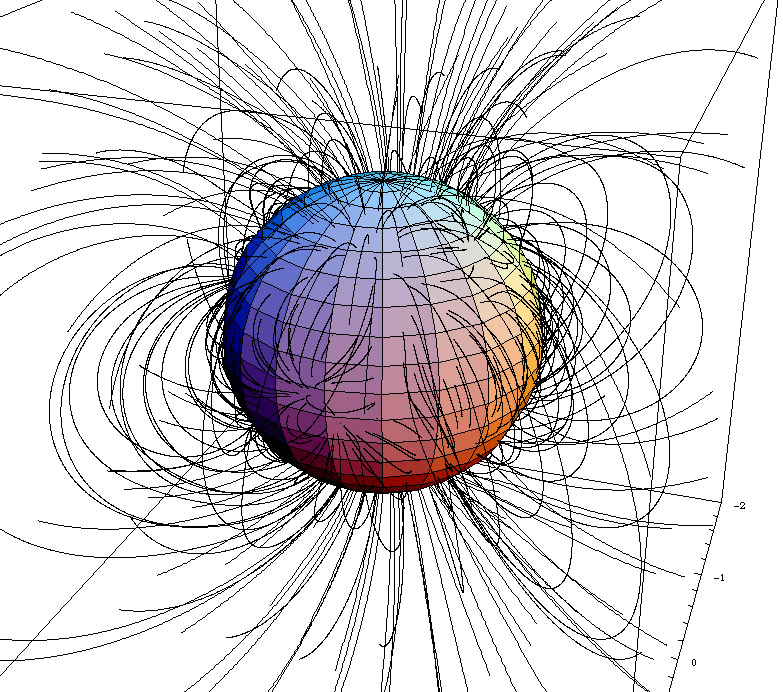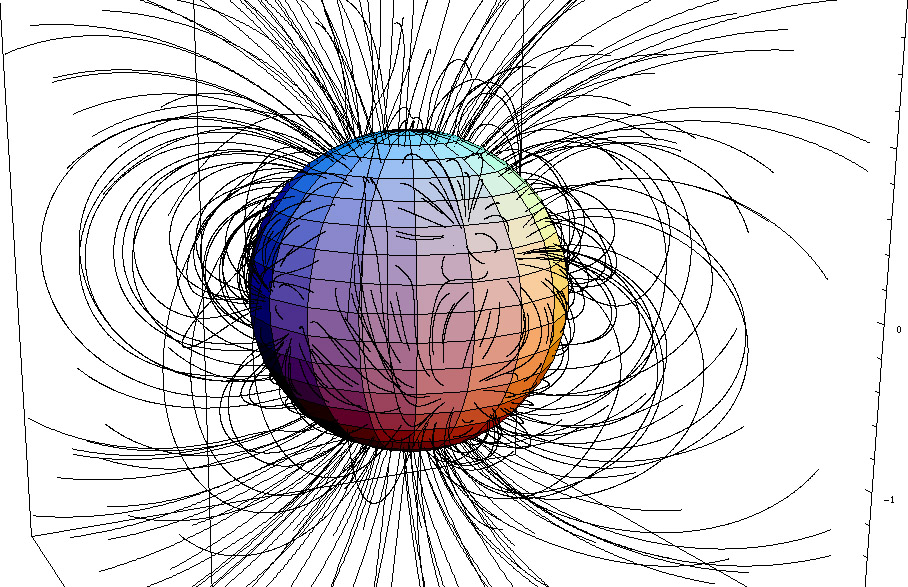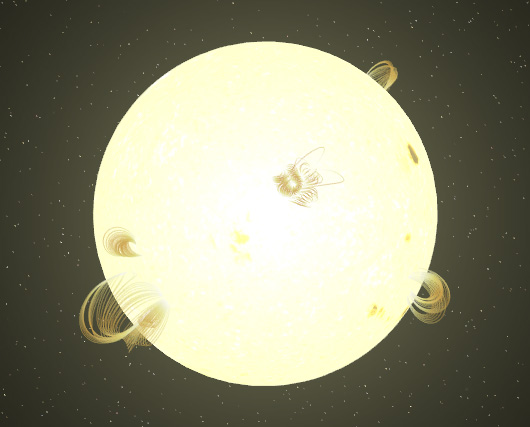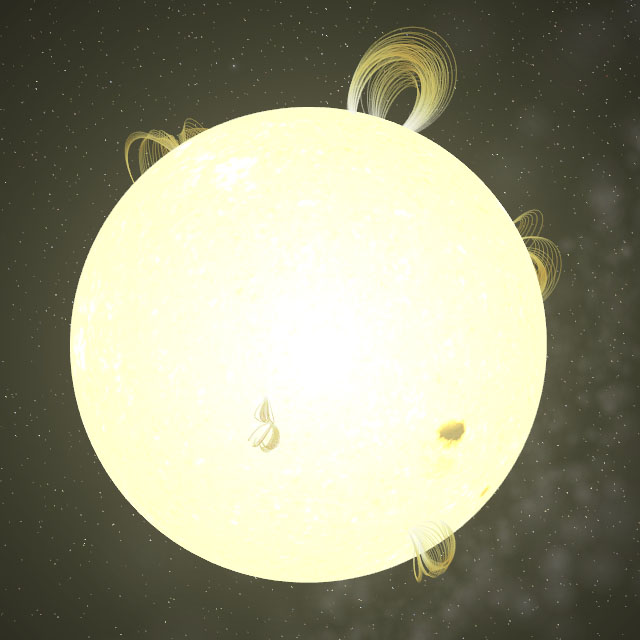
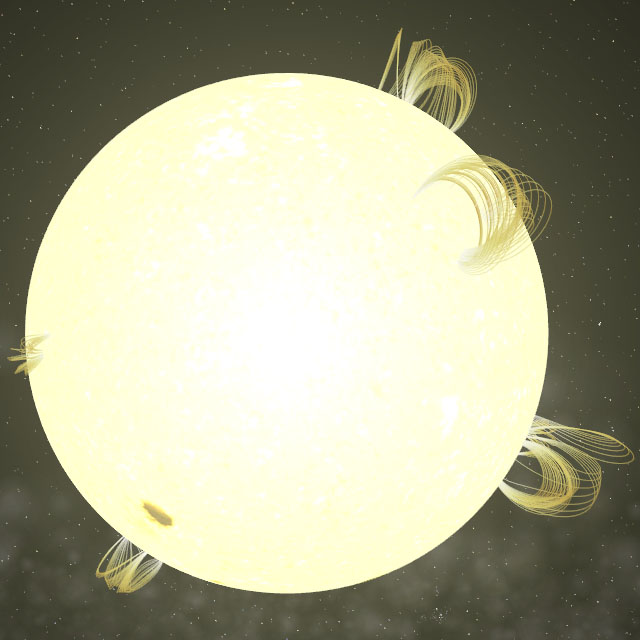
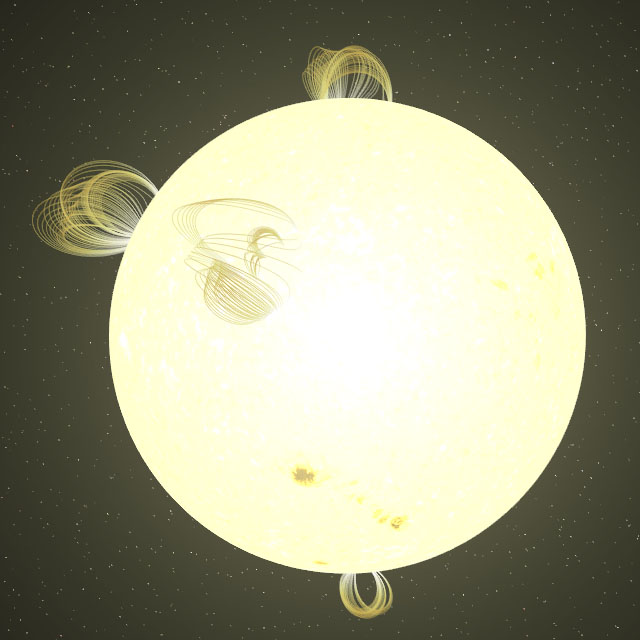
And here's the addon, for you to judge. Feedback would be appreciated :
http://nho.ohn.free.fr/celestia/Cham/Di ... Flares.zip (896 KB)



Cham wrote:What do you think of that flux tube (with proper color variations) ?

cyber_space_doc wrote:Is there any similar work in a matlab .M file format?
1) perhaps sunspots should appear beneath the flares and flux tubes.
4) A high res version with extra field lines (possibly thinner lines?) would be very nice.
Cham wrote:cyber_space_doc wrote:Is there any similar work in a matlab .M file format?
...
It's probably possible to do something similar with MathLab. However, I don't have this program and I don't know how to use it. You're on your own there.
GNU Octave is a high-level language, primarily intended for numerical computations. It provides a convenient command line interface for solving linear and nonlinear problems numerically, and for performing other numerical experiments using a language that is mostly compatible with Matlab. It may also be used as a batch-oriented language.
For more information, see the page about Octave.
